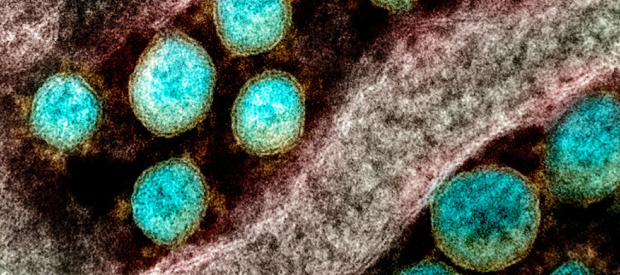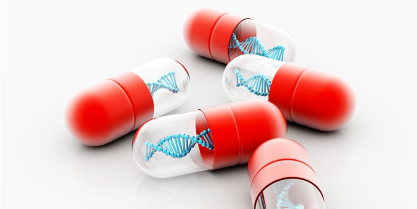Boundary-Crossing Partnerships
NCATS leverages collaborations across agencies, sectors and communities to speed research advances.
Building Bridges to Overcome Treatment Gaps
Ten thousand. And two.
An enormous biomedical challenge separates those two numbers. An extraordinary collaborative response could bring them closer together.
Ten thousand is the estimated number of known rare diseases. But by 2021, two was the number of rare diseases that had U.S. Food and Drug Administration (FDA)–approved gene therapies. Closing that therapeutic gap demands scientific expertise from every corner of biomedical research.
Most rare inherited diseases stem from a specific gene mutation that is already known, making gene therapy a promising therapeutic approach. To bring more gene therapies more quickly to those with rare diseases, NCATS teamed with a diverse group of partners across the public and private sectors to launch the Bespoke Gene Therapy Consortium (BGTC). Working as one, NIH, the FDA, pharmaceutical companies, and nonprofit organizations partnered to accelerate the development of gene therapies for the 30 million people in the United States suffer from a rare disease.
Gene therapy development for rare diseases is highly complex, time-consuming, and expensive. The development process is held up by limited access to tools and technologies, lack of standards across the field, and a one-disease-at-a-time approach. A standardized therapeutic development model that includes a common gene delivery technology (i.e., a vector) could offer a more efficient approach to specific gene therapies, saving time and money.
The BGTC will improve and simplify the gene therapy development process to help fill the unmet medical needs of people with rare diseases — particularly those diseases that are too rare to be of commercial interest.
“The BGTC aims to make it easier, faster and less expensive to pursue bespoke gene therapies to encourage more companies to invest in this space and bring more treatments to people,” said Joni L. Rutter, Ph.D., director of NCATS.
One of the BGTC’s primary goals is to deepen our understanding of a common gene delivery vector known as the adeno-associated virus (AAV). BGTC researchers will study AAV vector production, vector delivery of genes into human cells, and activation of therapeutic genes in target cells. These results will simplify vector manufacturing and enhance the overall therapeutic benefit of AAV gene therapy. The BGTC selected eight rare diseases for its clinical trials portfolio.
NCATS’ wide-ranging collaborations also advance gene therapy solutions, such as the Platform Vector Gene Therapy (PaVe-GT) program, and support small businesses developing and commercializing new translational technologies. Learn more about how NCATS builds partnerships across sectors to close the therapeutic gap between 10,000 and two.
More Partnership Stories
Scientists Identify Characteristics to Better Define Long COVID

National EHR Data Resource Reveals COVID-19’s Stark Mortality Risk in People with COPD




